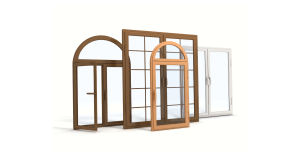Growing a garden is a hobby that brings people all around the world great joy and satisfaction. Seeing the fruits of your labor grow day by day and then enjoying them in meals and desserts is definitely something to look forward to throughout the month. Growing a windowsill herb garden is an effective way to do a little gardening in the home no matter what time of year it is.
You can forget about having to head to the store the next time one of your recipes is calling for a certain herb. Why not just grow a windowsill herb garden and grab your fresh herbs from the comfort of your own kitchen?
A windowsill garden is an economical and convenient way of increasing the uniqueness and flavor of your dishes. In addition, they are also a good way to increase the amount of greenery in your homes. Growing herb windows can result in pleasant fragrances that will have your home smelling much more fresh and pleasant.
If you enjoy any type of gardening, then you would enjoy building your own windowsill herb garden.
How Do You Get Started?
The first step to getting your windowsill herb garden started is deciding where you’ll be growing it. Many people like to start their windowsill gardens in the kitchen because that’s where they will be doing all of their cooking and baking. If you don’t have a lot of sun coming into your kitchen, you can consider setting up your windowsill garden on a window that has more sunlight exposure to it.
South-facing windows tend to receive the most sunlight in homes that are located in the northern hemisphere. Direct sunlight exposure is the key element to keep in mind here. If you set up your windowsill herb garden on a window that receives little to no sunlight during the day, then it might not do as well as those that are set up on windows with tons of sunlight.
Before setting things up, if you have wooden window sills, you might want to put some waterproof paint or waterproof covering over your windowsill to prevent any water damage that might occur. Accidents happen when watering herbs and plants all of the time, and covering your sills will prevent that from happening.
Figure Out What Type Of Herbs You’ll Grow
After you’ve decided on what windowsill to set up your herb garden, you’ll want to decide on what type of herbs you’ll be growing in it. Are you wanting to make your favorite herbal teas from the herbs? Are you wanting to use herbs for cooking?
- Basil – Basil is a herb that is commonly used in pasta, salads, and sandwiches
- Chives – Chives are commonly added to salads, soups, and eggs
- Oregano – Oregano is a peppery type of herb that is commonly used in soups, pasta, pizzas, casseroles, and meats
- Parsley – Parsley is commonly used in chicken, fish, and vegetables
- Thyme – Thyme is used in teas, marinades, and meats
- Mint – If you’re wanting to increase the freshness of something you’re cooking, mint is perfect for adding to salads, sauces, chicken, and lamb dishes
- Rosemary – Rosemary helps with the digestion of food and will help increase your circulation
Before jumping the gun and growing your herbs, you’ll want to take into account the amount of sunlight and watering that each herb requires.
Potting
Purchasing herbs that are already in pots means you don’t have to worry about buying everything separately. You’ll only have to transplant them into their permanent container. If you didn’t purchase herbs in pots, then you’ll want to make potting soil. The recipe for that is as follows:
- 1 part of peat moss
- 1 part of the compost
- 1 part of perlite
- 1 part of the topsoil
If you’re intending on growing your herbs from seed form, then you’ll want to use a seed-starting mix as opposed to going with a potting mix. You can buy seed-starting mixes at any gardening or home hardware store, but you can also make your own with this recipe:
- 4 parts of compost
- 2 parts of peat moss
- 1 part of perlite
- 1 part of vermiculite
Planting
As you’re transplanting your herbs, you’ll want to make sure you transfer over all of the soil that they come in so that the roots aren’t damaged. You’ll also want to ensure that the size of your pots is all the right ones. They should be around six inches in diameter and should also come with a saucer or a drainage tray.
If you’re growing your windowsill garden from scratch, get a seed tray that will allow the seeds to germinate properly. Egg cartons work well for doing this. Ensure that you have a waterproof tray that will contain the water that manages to get through the tray.
Maintenance
After you’ve finished setting up your garden, you’ll want to keep a schedule of when to water them. Make sure they are getting their sunlight every single day, and always keep a close watch on them to see how they are doing.
Get some fertilizer and use it on a regular basis to make sure your herbs are getting all of the nutrients they require.
Windows
If you have Low-E glass windows, then your herb garden should do exceptionally well. These types of windows also ensure your energy bills are minimized from month to month. Low-E windows prevent the harmful UV rays from the sun from getting into your home and causing your furniture and floors to fade. In addition, a lot of UV sun exposure can destroy your herbs.
Having the right windows in your home can go a long way in ensuring your herb garden will thrive. End vent slider windows have a fixed window panel located in the center of them. This makes a perfect location to get your herb garden started.
A double-hung window has a lower panel that can be shut if the sun is getting too extreme at certain times of the day.
Windowsill herb gardens are a great way to add some greenery to your home while being able to enjoy the benefits of fresh herbs for all of your foods.

